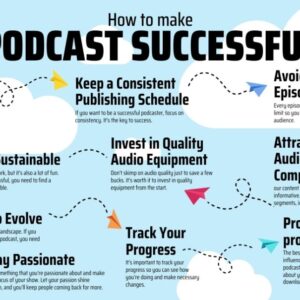
Why cashback still wins in 2025
Cashback is simple. You spend, you get money back. No blackout dates. No conversion charts. No “what’s a point worth?” math.
This guide shows you the best cashback credit cards for 2025 in the USA and Canada, how to use them, and how to avoid traps. I keep the language plain, the tips practical, and the takeaways quick.
Offers change. Check details with the issuer before you apply. I cite two expert hubs so you can verify current picks: see NerdWallet’s latest cash-back rankings for the U.S. and MoneySense’s 2025 cashback winners for Canada. (NerdWallet)
How to pick the right cashback card in two minutes
Match the card to your biggest monthly costs. Keep it simple.
- High groceries and gas? Choose a category card that boosts those spends.
- Mixed spending? Go with a flat-rate card that pays the same everywhere.
- Love optimizing? Pair a flat-rate card with a category or rotating-bonus card.
- Hate annual fees? Canada has strong no-fee choices. The U.S. has several too.
- Carry a balance? Cashback is secondary. Kill debt first. Interest erases rewards.
The big cashback families (explained fast)
- Flat-rate cards: One simple rate on everything. Easy, predictable.
- Tiered category cards: Higher rates for set categories, lower base rate for the rest.
- Rotating category cards: Big rate on quarterly themes. Activation needed.
- Choose-your-own category cards: You pick the boosted category each cycle.
- Ecosystem boosters: Bank relationship tiers enhance your cash back.
USA vs. Canada in one glance
Canada leans hard into no-fee cards with strong everyday value.
The U.S. market offers more variety, larger welcome offers, and rotating bonuses.
- U.S.: deep lineups, frequent promos, bigger ecosystems.
- Canada: cleaner choices, competitive grocery and bill earn, friendly redemptions.
To see current top picks, cross-check with NerdWallet’s list and MoneySense’s picks as you read. (NerdWallet)
The 2025 shortlist: what consistently ranks high
I do not lock you into one “winner.” I highlight archetypes that keep winning.
USA examples that often score well (as of Oct 2025):
- A 2% flat-rate card for “set and forget.”
- A 1.5%-plus hybrid card that boosts dining, drugstores, or travel portals.
- A rotating 5% card for quarterly categories.
- A 3% choose-your-own category card for gas or online shopping.
Canada examples that often score well (as of Oct 2025):
- A no-fee flat-rate card with an accelerated U.S.-purchase earn.
- A groceries + gas tiered Visa Infinite.
- A pick-your-categories Mastercard that pays 2% on two categories.
See the latest winners on NerdWallet and MoneySense. (NerdWallet)
Quick comparison table (USA + Canada archetypes)
These are archetypes with real card examples that commonly appear on expert lists. Rates and names can change. Always verify before you apply.
| Country | Best if you want… | Example card type & typical earn style | Why it’s great | Watch out for |
|---|---|---|---|---|
| USA | Simple, no fuss | Flat-rate 2% on all purchases | No tracking. Solid for everything. | Some cards require redemption steps or pay as “cash rewards.” |
| USA | Everyday boosts | Hybrid 1.5%+ everywhere, higher on dining/drugstores/travel portal | One card can cover most life. | Portal travel earns more, but compare prices. |
| USA | Big category wins | Rotating 5% quarterly (activation) | Huge rate if you plan spend. | Quarterly caps. Requires calendar reminders. |
| USA | Custom focus | Choose-your-own 3% category | Tailors to your month. | Lower base rate on non-chosen categories. |
| Canada | No annual fee dominance | No-fee flat-rate with boosted U.S. purchases | Great for cross-border buys. | Minimum income for World Elite tiers. |
| Canada | Essentials powerhouse | Groceries + gas tiered Visa Infinite | Maximizes core household costs. | Annual fee vs. net cash back math. |
| Canada | DIY categories | Pick-two or three 2% categories | Flexible, beginner friendly. | 0.5%–1% on the rest can feel light. |
Cross-check representative winners on NerdWallet (U.S.) and MoneySense (Canada). (NerdWallet)
What changed in 2025—and why it matters
Card ecosystems got smarter. Issuers nudged you toward their travel portals, delivery partnerships, and premium relationship tiers. Good news: more ways to earn. Bad news: more fine print.
Trends you feel as a cardholder:
- Portal incentives: Higher earn on issuer travel bookings.
- Lifestyle credits: Food delivery, ride share, or streaming credits.
- Bank relationships: Higher balances can boost your rewards rate.
- Mobile redemptions: Instant statement credits in app.
When you verify picks, scan each issuer page for portal multipliers and credits. For card shortlists and ongoing rankings, lean on NerdWallet (U.S.) and MoneySense (Canada). (NerdWallet)
The cleanest starter setup (USA)
Want one card? Get a flat-rate 2% card. Done.
Want two cards? Add a rotating 5% card. Use it where it shines. Use the flat-rate card everywhere else.
Why it works
- Easy to manage.
- Strong average earn without heavy tracking.
- Quarterly bonuses are a nice boost.
Check which specific cards currently lead those buckets on NerdWallet’s list. (NerdWallet)
The cleanest starter setup (Canada)
Prefer no annual fee? Grab a no-fee flat-rate card that also boosts U.S. purchases.
Drive a lot or feed a family? Consider a groceries + gas Visa Infinite with a fee, but run the math.
Why it works
- Canada’s no-fee options are unusually strong.
- Grocery and gas tiers can beat flat-rate on big households.
- Many cards let you redeem any time as statement credits.
See current Canadian leaders on MoneySense’s 2025 picks. (MoneySense)
How to stack your wallet without stress
A three-card plan covers almost everyone:
- Flat-rate 2%: Use when no bonus applies.
- Category specialist: Groceries, gas, or dining as your life demands.
- Rotating 5% (U.S.) or Pick-your-own 2% (Canada): Tactical boosts.
Rules to keep it sane
- Label each card with a sticker: “Groceries,” “Gas,” “Everything.”
- Set calendar alerts for rotating categories.
- Auto-redeem to statement credits if allowed.
Confirm which card names now top these buckets via NerdWallet and MoneySense. (NerdWallet)
Welcome offers: turbo, not forever
Welcome offers are sweet. They are also temporary.
Treat them as a bonus, not the core value.
Use them well
- Apply when you have planned expenses, not to spend extra.
- Break the minimum spend across bills, groceries, and insurance if possible.
- Track the deadline in your phone calendar.
For current U.S. standouts, scan NerdWallet’s ranking page before you pull the trigger. (NerdWallet)
Redemption that feels instant
Cashback should feel like cash.
Aim for cards with real statement credits, bank deposits, or Pay-with-Rewards at checkout.
Redemption tips
- If a portal forces gift cards, think twice.
- “Anytime” redemption beats annual lump sums.
- Auto-redeem helps you never forget.
Both NerdWallet and MoneySense highlight redemption style in their picks. Check that section carefully. (NerdWallet)
Avoid these cashback landmines
Even great cards can cost you money if you miss the traps.
- Carrying a balance: Interest outpaces rewards fast.
- Foreign transaction fees: A “great” 2% card with 3% FX is not great abroad.
- Caps and calendars: Quarterly or monthly caps limit upside.
- Category definitions: “Superstores” sometimes don’t count as grocery.
- Downgrades and changes: Issuers tweak terms. Stay alert.
Before you apply, compare terms on the card page. Use NerdWallet and MoneySense as your final check. (NerdWallet)
U.S. playbook: best-fit picks by lifestyle
These are use-case blueprints you can map to current card names on the rankings page.
The one-card optimizer
- Get a 2% flat-rate card.
- Redeem monthly as a statement credit.
- Add nothing until your life changes.
The family CFO
- Pair a groceries + gas specialist with a flat-rate backup.
- Pay utilities and phone bills on the higher earn card if covered.
- Monitor caps. Shift extra spend to flat-rate after you hit the limit.
The deal hunter
- Use a rotating 5% card for quarterly themes.
- Track quarterly caps in your notes app.
- Put overflow on your flat-rate card.
The city diner
- Choose a dining-heavy hybrid with strong everyday earn.
- Look for partners like DoorDash or rideshare credits.
- Keep a no-FX card for trips.
Check which U.S. cards currently ace these roles on NerdWallet. (NerdWallet)
Canada playbook: best-fit picks by lifestyle
Map these roles to current winners on MoneySense.
The no-fee loyalist
- Grab a no-fee flat-rate card.
- Leverage 3% on U.S. purchases if offered.
- Redeem any time for clean statement credits.
The road-trip family
- Go groceries + gas with a Visa Infinite.
- Use a pick-your-own card for restaurants or recurring bills.
- Run the annual fee math at least twice a year.
The DIY category chooser
- Pick two or three 2% categories that match your life.
- Set a reminder to adjust categories when seasons change.
- Use a flat-rate backup for everything else.
See which Canadian cards lead each lane on MoneySense’s 2025 list. (MoneySense)
Annual fee math: quick and honest
A fee can pay for itself if your bonus categories are large.
Use this three-step check:
- Estimate yearly spend in boosted categories.
- Multiply by the category rate and subtract the flat-rate baseline.
- Compare the difference to the annual fee.
Example
- $8,000 groceries at 4% vs. 2% flat-rate = 2% extra = $160.
- If the annual fee is $120, you are $40 ahead before other perks.
Run this check against current category leaders on the lists you trust. (NerdWallet)
FX fees vs. U.S.-purchase boosts (Canadian readers)
Cross-border shopping is common. Watch the math.
- 3% FX fee can erase your base earn.
- A 3% U.S.-purchase earn can offset FX and still leave you net positive.
- If you travel often, consider a no-FX card for simplicity.
MoneySense’s pick pages flag FX and U.S.-purchase earn. Skim that line item. (MoneySense)
Redemption timing: don’t hoard
Cash loses value to inflation. Cashback is not an investment.
- Redeem monthly or quarterly.
- Set auto-redeem to statement credit if possible.
- Use lump-sum redemptions only if a bonus applies.
NerdWallet and MoneySense note redemption policies near the top of each review. (NerdWallet)
Credit score realities you should know
Great cards expect decent credit.
If you are rebuilding credit, consider no-fee or secured options first.
- Pay in full.
- Keep utilization low.
- Avoid opening too many cards at once.
Then graduate to stronger cashback choices from the two lists. (NerdWallet)
Safety first: cashback isn’t worth debt
Cashback is not free money if you carry balances.
Interest rates can be brutal.
If you have debt
- Stop new applications.
- Use a 0% intro APR balance transfer only with a payoff plan.
- Automate payments.
- Revisit cashback after you clear debt.
NerdWallet’s rankings often call out intro APR options. Check the fine print. (NerdWallet)
Mobile-first habits that boost your real cash back
Most of us read this on phones. Optimize your habits there.
- Install your bank app and enable alerts.
- Turn on category reminders for rotating bonuses.
- Add merchant rules in personal finance apps to track grocery vs. superstore.
- Enable tap-to-pay for speed and security.
How many cards should you keep?
For most, two is the sweet spot.
Three if you like optimization.
More can work, but only with discipline.
Rules of thumb
- Open one new card per six months at most.
- Auto-pay every card in full.
- Close only after you consider credit history impacts.
The 12-month cashback plan (copy this)
Month 1
- Pick a flat-rate card and one category card matched to your life.
- Set auto-pay. Turn on alerts.
Month 2–3
- Route groceries and gas to the right card.
- Use the flat-rate card for everything else.
Month 4
- Audit spend. If rotating categories would help, add a card.
Month 5–6
- Redeem monthly. Switch category choices if your card allows.
- Add billers to your highest-earning card when rates apply.
Month 7–9
- Re-check annual fee math. Keep only what pays you back.
- Evaluate if bank relationship bonuses make sense for you.
Month 10–12
- Review your year.
- Downgrade or switch if your life changed.
- Keep it lean. Keep it paid.
Match card names to each step using NerdWallet (U.S.) and MoneySense (Canada). (NerdWallet)
Frequently asked mini-questions
Can I get both cash back and travel points?
Yes. Some cards let you convert or redeem in portals. But for pure simplicity, stick with cash credits first. Verify these options on each card’s page from the two lists. (NerdWallet)
What about student or secured cards?
Start with a no-fee option that earns on campus life or essential bills. Pay perfectly for six months. Then upgrade.
Are grocery superstores counted as “grocery”?
Not always. Warehouse clubs and big box stores can miss the grocery code. Check your statement for the category line.
Can I stack store apps and card cash back?
Yes. That is how you beat inflation. App coupons first, then cashback at checkout.
Real-world scenarios and best fits
Remote worker with food delivery spend (U.S.)
- Hybrid card with dining and delivery boosts.
- Flat-rate card as backup.
- Portal travel earn is a cherry on top.
Find current best fits on NerdWallet’s page. (NerdWallet)
Cross-border online shopper (Canada)
- No-fee flat-rate with U.S.-purchase acceleration.
- Keep an eye on FX and lounge perks if you travel.
- Add pick-your-own categories for online shopping and recurring bills.
Scan MoneySense for the latest leaders. (MoneySense)
Family of five with rising grocery prices
- Category card that maxes groceries.
- Flat-rate for overflow after category caps.
- Re-run annual fee math every six months.
Use the U.S. or Canada list based on your location. (NerdWallet)
Redemption pro tips that feel like cheating
They are all legit.
- Turn on auto-redeem to statement credits.
- If your card allows real-time rewards, use them at checkout.
- Sweep rewards before you close or downgrade a card.
- Keep at least one no-fee card open for credit history.
Cash back + budgeting = inflation control
Cashback is not a cure, but it helps.
Combine your card with one of these quick habits:
- Move your grocery list into a notes app with weekly totals.
- Use a price book for ten items you buy often.
- Stack cashback + store promos + manufacturer coupons when possible.
- Automate bill pay on the card that earns the most for utilities.
When to say “no” to a flashy card
Say no when:
- You will carry a balance.
- The category map does not match your life.
- The annual fee takes more than it gives.
- Redemption is clunky or capped too low.
- You already have two cards that fit better.
A compact “cheat sheet” for quick decisions
- One card only? Flat-rate 2%.
- Two cards? Flat-rate + groceries/gas or dining specialist.
- Three cards? Add rotating 5% (U.S.) or pick-your-own 2% (Canada).
- No fee lover? Canada shines. The U.S. still has solid no-fee options.
- Travel sometimes? Don’t chase portals unless prices are equal.
- Redeem often. Do not hoard cash back.
- Pay in full. Every time.
Back up your choice by skimming NerdWallet (U.S.) and MoneySense (Canada) right before you apply. (NerdWallet)
Final word: keep it simple, keep it profitable
The best cashback card for 2025 is the one that matches your actual spending and rewards you without stress. Most people can win with a flat-rate card plus one category card. Power users can add a third, but only if the value stays clear.
Before you apply, do a two-minute check on the two expert pages below. They keep rankings fresh and transparent:
- U.S.: NerdWallet’s Best Cash Back Credit Cards. (NerdWallet)
- Canada: MoneySense’s Best Cash Back Credit Cards in 2025. (MoneySense)
Now pick your lane, set auto-pay, and let your wallet start paying you back—every single month.
FAQs
1. What is a cashback credit card and how does it work?
A cashback credit card rewards you with a percentage of your spending back as cash. For example, if you earn 2% cashback and spend $1,000, you get $20 back. Rewards can be redeemed as statement credits, bank deposits, or even gift cards depending on the issuer’s policy.
2. Are cashback credit cards better than travel rewards cards?
It depends on your lifestyle. If you travel frequently, a travel rewards card might give you better value through miles or points. But if you prefer simplicity and guaranteed value, cashback cards are ideal—especially since the cash you earn can be used for anything.
3. Do cashback credit cards charge annual fees?
Some do, but many great cashback credit cards come with no annual fee. Cards with annual fees usually offer higher cashback rates, additional perks like insurance, or special category bonuses. Always compare your expected earnings to the fee to ensure it’s worth it.
4. How can I maximize cashback rewards in 2025?
To maximize your rewards:
- Use the right card for each purchase category (groceries, gas, dining).
- Take advantage of rotating category bonuses.
- Pay balances in full to avoid interest charges.
- Redeem rewards regularly for statement credits or direct deposits.
5. Are cashback credit cards safe to use online?
Yes—reputable cashback credit cards come with fraud protection, zero liability policies, and real-time transaction alerts. Always use secure payment gateways and monitor your account regularly to catch unauthorized activity early.







